Neohesperidin Dihydrochalcone
Neohesperidin Dihydrochalcone is extracted from Citrus Aurantium L.. Stanford Chemicals has been providing quality Neohesperidin Dihydrochalcone and many other natural plant extracts for over 25 years.
Neohesperidin Dihydrochalcone Safety Tips
Handling of Neohesperidin Dihydrochalcone should only be performed by personnel trained and familiar with handling potent active pharmaceutical ingredients. Moderate to severe irritant to the skin and eyes.
References
- 1. Dihydrochalcone glycosides from Oxytropis myriophylla.
She G, Wang S, Liu B.Chem Cent J. 2011 Nov 9;5:71. doi: 10.1186/1752-153X-5-71. - 2. Determination of nine high-intensity sweeteners in various foods by high-performance liquid chromatography with mass spectrometric detection.
Zygler A, Wasik A, Kot-Wasik A, Namie?nik J.Anal Bioanal Chem. 2011 Jun;400(7):2159-72. doi: 10.1007/s00216-011-4937-z. Epub 2011 Apr 5. - 3. Retention behaviour of some high-intensity sweeteners on different SPE sorbents.
Zygler A, Wasik A, Namie?nik J.Talanta. 2010 Oct 15;82(5):1742-8. doi: 10.1016/j.talanta.2010.07.070. Epub 2010 Aug 6. - 4. Expression of Na+/glucose co-transporter 1 (SGLT1) is enhanced by supplementation of the diet of weaning piglets with artificial sweeteners.
Moran AW, Al-Rammahi MA, Arora DK, Batchelor DJ, Coulter EA, Daly K, Ionescu C, Bravo D, Shirazi-Beechey SP.Br J Nutr. 2010 Sep;104(5):637-46. doi: 10.1017/S0007114510000917. Epub 2010 Mar 26. - 5. Analysis and occurrence of seven artificial sweeteners in German waste water and surface water and in soil aquifer treatment (SAT).
Scheurer M, Brauch HJ, Lange FT.Anal Bioanal Chem. 2009 Jul;394(6):1585-94. doi: 10.1007/s00216-009-2881-y. Epub 2009 Jun 16. - 6. The binding site for neohesperidin dihydrochalcone at the human sweet taste receptor.
Winnig M, Bufe B, Kratochwil NA, Slack JP, Meyerhof W.BMC Struct Biol. 2007 Oct 12;7:66. - 7. Antioxidant properties of neohesperidin dihydrochalcone: inhibition of hypochlorous acid-induced DNA strand breakage, protein degradation, and cell death.
Choi JM, Yoon BS, Lee SK, Hwang JK, Ryang R.Biol Pharm Bull. 2007 Feb;30(2):324-30. - 8. Metabolic engineering of plant cells for biotransformation of hesperedin into neohesperidin, a substrate for production of the low-calorie sweetener and flavor enhancer NHDC.
Frydman A, Weisshaus O, Huhman DV, Sumner LW, Bar-Peled M, Lewinsohn E, Fluhr R, Gressel J, Eyal Y.J Agric Food Chem. 2005 Dec 14;53(25):9708-12. - 9. Degradation of neohesperidin dihydrochalcone by human intestinal bacteria.
Braune A, Engst W, Blaut M.J Agric Food Chem. 2005 Mar 9;53(5):1782-90. - 10. Cloning and expression of a phloretin hydrolase gene from Eubacterium ramulus and characterization of the recombinant enzyme.
Schoefer L, Braune A, Blaut M.Appl Environ Microbiol. 2004 Oct;70(10):6131-7. - 11. Crystal architecture and conformational properties of the inclusion complex, neohesperidin dihydrochalcone-cyclomaltoheptaose (beta-cyclodextrin), by X-ray diffraction.
Malpezzi L, Fronza G, Fuganti C, Mele A, Brückner S.Carbohydr Res. 2004 Aug 23;339(12):2117-25. - 12. Oral zinc sulfate solutions inhibit sweet taste perception.
Keast RS, Canty TM, Breslin PA.Chem Senses. 2004 Jul;29(6):513-21. - 13. Embryotoxicity and teratogenicity study with neohesperidin dihydrochalcone in rats.
Waalkens-Berendsen DH, Kuilman-Wahls ME, Bär A.Regul Toxicol Pharmacol. 2004 Aug;40(1):74-9. - 14. Some sweet and bitter tastants stimulate inhibitory pathway of adenylyl cyclase via melatonin and alpha 2-adrenergic receptors in Xenopus laevis melanophores.
Zubare-Samuelov M, Peri I, Tal M, Tarshish M, Spielman AI, Naim M.Am J Physiol Cell Physiol. 2003 Nov;285(5):C1255-62. Epub 2003 Jul 2. - 15. Sense of taste in a new world monkey, the common marmoset: recordings from the chorda tympani and glossopharyngeal nerves.
Danilova V, Danilov Y, Roberts T, Tinti JM, Nofre C, Hellekant G.J Neurophysiol. 2002 Aug;88(2):579-94. - 16. Sweetener preference of C57BL/6ByJ and 129P3/J mice.
Bachmanov AA, Tordoff MG, Beauchamp GK.Chem Senses. 2001 Sep;26(7):905-13. Erratum in: Chem Senses. 2008 Sep;33(7):681-2. - 17. [Determination of neohesperidin dihydrochalcone in foods].
Nakazato M, Kobayashi C, Yamajima Y, Kawano M, Yasuda K.Shokuhin Eiseigaku Zasshi. 2001 Feb;42(1):40-4. Japanese. - 18. Improved water solubility of neohesperidin dihydrochalcone in sweetener blends.
Benavente-García O, Castillo J, Del Baño MJ, Lorente J.J Agric Food Chem. 2001 Jan;49(1):189-91. - 19. PROP (6-n-Propylthiouracil) tasting and sensory responses to caffeine,sucrose, neohesperidin dihydrochalcone and chocolate.
Ly A, Drewnowski A.Chem Senses. 2001 Jan;26(1):41-7. - 20. Neohesperidin dihydrochalcone is not a taste enhancer in aqueous sucrose solutions.
Kroeze JH.Chem Senses. 2000 Oct;25(5):555-9.
Details
| Product Name | Neohesperidin dihydrochalcone |
|---|---|
| CAS No. | 20702-77-6 |
| Molecular Formula | C28H36O15 |
| Molecular Weight | 612.58 |
| Botanical Source | Citrus Aurantium L. |
| Purity | 96% HPLC |
| Appearance | Off-white powder |
| Package | 25 kg/drum |
| Storage | Stored in cool & dry places, protected from direct sunlight and heat. |
| Shelf Life | 2 years |
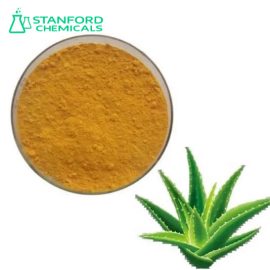
| Product Name | Aloe-emodin |
|---|---|
| CAS No. | 481-72-1 |
| Molecular Formula | C15H10O5 |
| Molecular Weight | 270.24 |
| Purity | 95%, 98% HPLC |
| Package | 25 kg/drum |
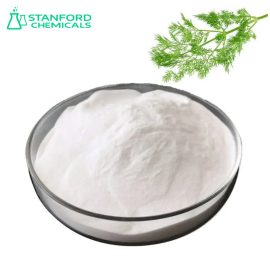
| Product Name | Artemisinin |
|---|---|
| CAS No. | 63968-64-9 |
| Molecular Formula | C15H22O5 |
| Molecular Weight | 282.33 |
| Botanical Source | Artemisia Annua |
| Purity | 99% HPLC |
| Appearance | White powder |
| Package | 25 kg/drum |
| Storage | Stored in cool & dry places, protected from direct sunlight and heat. |
| Shelf Life | 2 years |
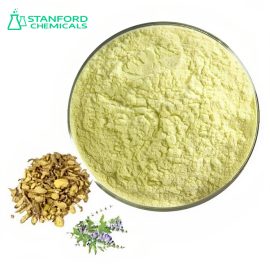
| Product Name | Baicalin |
|---|---|
| CAS No. | 21967-41-9 |
| Molecular Formula | C21H18O11 |
| Molecular Weight | 446.36 |
| Purity | 85-95%,98% HPLC |
| Package | 25 kg/drum |
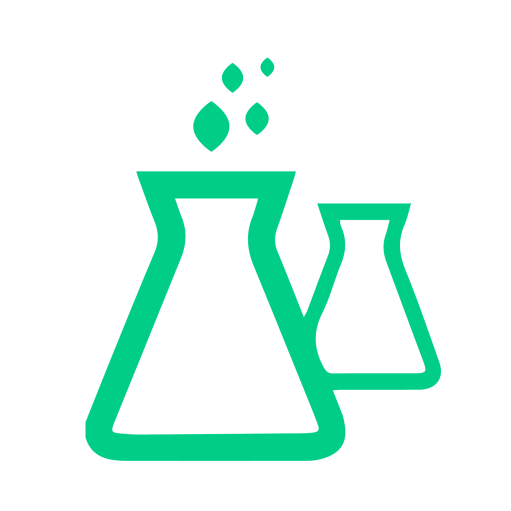
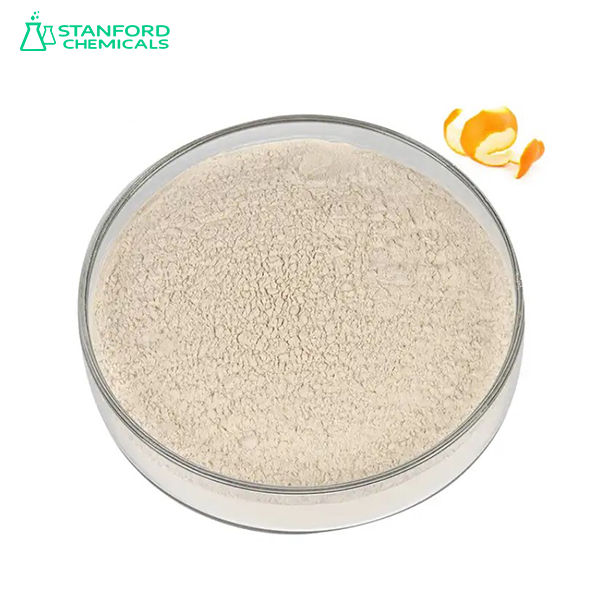
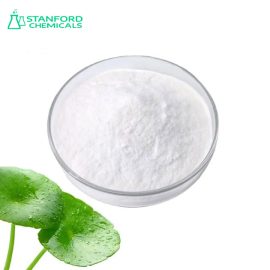
Reviews
There are no reviews yet.